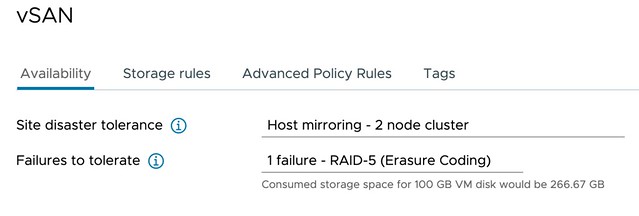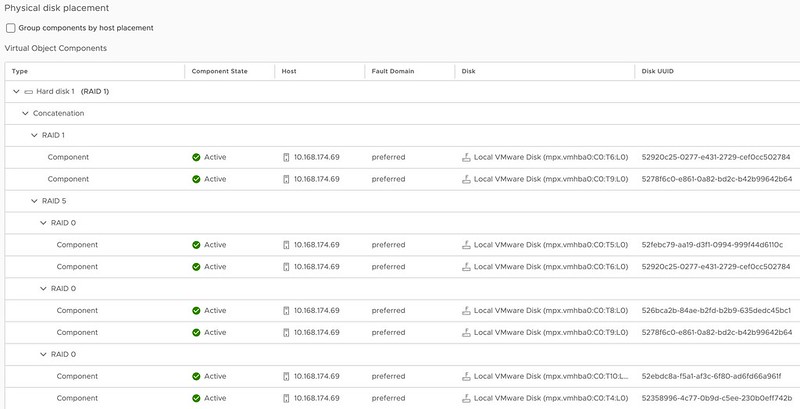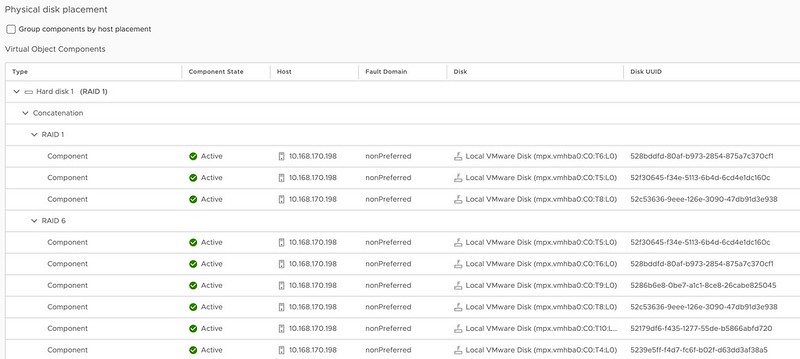

Are Nested Fault Domains supported with 2-node configurations with vSAN 8.0 ESA?
source link: https://www.yellow-bricks.com/2022/10/28/are-nested-fault-domains-supported-with-2-node-configurations-with-vsan-8-0-esa/
Go to the source link to view the article. You can view the picture content, updated content and better typesetting reading experience. If the link is broken, please click the button below to view the snapshot at that time.

Are Nested Fault Domains supported with 2-node configurations with vSAN 8.0 ESA?
Duncan Epping · Oct 28, 2022 · 4 Comments
Short answer, yes 2-node configurations with vSAN 8.0 ESA support Nested Fault Domains. Meaning that when you have a 2-node configuration you can also protect your data within each host with RAID-1, RAID-5, or RAID-6! The configuration of this is pretty straightforward. You create a policy with “Host Mirroring” and select the protection you want in each host. The screenshot below demonstrates this.

In the above example, I mirror the data across hosts and then have a RAID-5 configuration within each host. Now when I create a RAID-5 configuration within each host I will get the new vSAN ESA 2+1 configuration. (2 data blocks, 1 parity block) If you have 6 devices or more in your host, you can also create a RAID-6 configuration, which is 4+2. (4 data blocks, 2 parity blocks) This provides a lot of flexibility and can lower the overhead when desired. (RAID-1 = 100% overhead, RAID-5 = 50% overhead, RAID-6 = 25% overhead) When you use RAID-5 and RAID-6 and look at the layout of the data it will look as shown in the next two screenshots, the first screenshot shows the RAID-5 configuration, and the second the RAID-6 configuration.


One thing you may wonder when looking at the screenshots is why they also have a RAID-1 configuration for the VMDK object, this is the “performance leg” that vSAN ESA implements. For RAID-5, which is “FTT=1”, this means you get 2 components. For RAID-6, which is FTT=2, this means you will get 3 components so you can tolerate 2 failures.
I hope that helps answer some of the questions folks had on this subject!
Share it:
Recommend
-
 173
173
What’s really wrong with node_modules and why this is your faultI was never really concerned about the size of node_modules — my thinking was that you should not care too much about the too...
-
 89
89
TLDR: Libraries should let innovation come either from within the core or from plugins/middleware out in the wild. Trying both approaches in parallel can light up the wrath among both users and…
-
 92
92
-
 22
22
The Node.js 8.x Maintenance LTS cycle will expire on December 31, 2019 - which means that Node 8 won’t get any more updates, bug fixes or security patches. In this article, we’ll discuss how and why you should move to ne...
-
 43
43
编者注:一般而言,我们会将 Fault Proof 认为是与 Layer-2 相关的概念,是 Layer-2 将自己的状态报告给 Layer-1 时采取的模式。但在本文中,作者使用的是广义的错误性证明概念,考虑的是如何设计一种错误性证明模式,使 SPV 节点(近似于...
-
 26
26
Lately there is a trend to use a messaging system for practically everything. Just like it is with microservices. When it comes to messaging, you have to balance between the different properties each messaging system pro...
-
 14
14
Sorry this one is late! I’ve been having a rough time lately, which I think is pretty normal right now for everyone. But I’m doing a bit better now and hope to stay that way for the next month or so. Hope. Anyway,...
-
 23
23
Another long night. I was working on my perfect, bug-free program in C, when the predictable thing happened: $ clang skynet.c -o skyne...
-
 7
7
Estimating the Fault Tolerant Cost of Classically Intractable Quantum ComputationsEstimating the Fault Tolerant Cost of Classically Intractable Quantum Computations - YouTube Live cha...
-
 11
11
Nested Fault Domains on a 2-Node vSAN Stretched Cluster, is it supported? Duncan Epping · Jun 20, 2022 ·
About Joyk
Aggregate valuable and interesting links.
Joyk means Joy of geeK